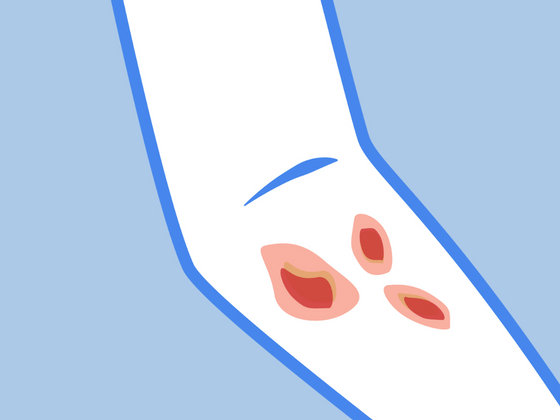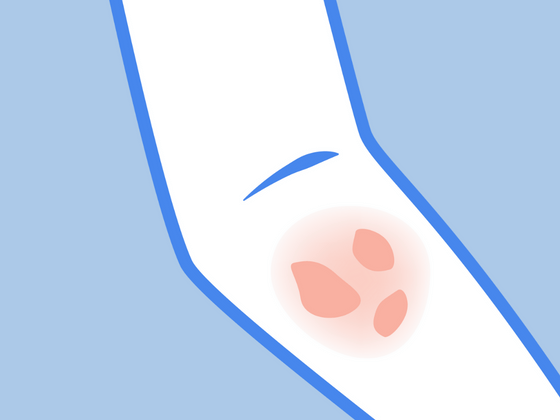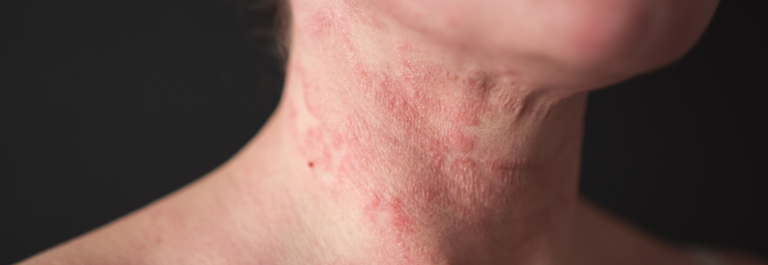Like humans, dogs can experience allergic reactions to various substances they come into contact with. If you have noticed that your dog is licking, biting, and grooming their fur more often than usual, they could be suffering from contact dermatitis, an allergic skin disease. Contact dermatitis in dogs, also known as allergic dermatitis, refers to theinflammation and irritation of the skin in response to a specific allergen or irritant making physical contact with a dog's skin cells. This contact allergy usually takes the form of sore, itchy patches of skin and can be relieved through a variety of natural treatments.
Throughout this blog, we are going to cover everything you need to know about:
-
The symptoms of contact dermatitis in dogs
-
What causes contact dermatitis in dogs
-
How to treat symptoms naturally
Read on to learn more about treating contact dermatitis in your furry friend naturally.
What Causes Contact Dermatitis in Dogs?
Contact dermatitis is a hypersensitivity reaction that leads to a localized immune response and inflammation when chemicals and allergens encounter a dog's exposed skin. There are two types of contact dermatitis in dogs: one caused by the immune system's overreaction to an allergen (allergic contact dermatitis) and the other by the irritant damaging the skin (irritant contact dermatitis). Symptoms of each type are similar, making it difficult to differentiate between the two.
Allergens are usually harmless substances that activate the immune system to cause skin inflammation. The most common allergens in dogs are flea saliva, pollen, dust, and mold spores; however, some dogs can also develop skin conditions from different food allergies. Irritants are substances known to irritate the skin. The most common irritating substances known to cause contact dermatitis include shampoos, cleaning chemicals, and certain textile materials. Certain plants can also cause contact dermatitis by releasing substances that irritate your dog's skin when they brush up against it.
Contact dermatitis is relatively uncommon in dogs, affecting only around 10%. This is primarily because dogs' coats provide a protective barrier to the outside world. As a result, dogs usually develop contact dermatitis in areas of their body that lack fur, such as their muzzle, armpits, belly, groin, and paws. Dogs that already suffer from allergies are more susceptible to developing contact dermatitis.
Contact dermatitis in dogs requires prompt veterinary examination. If untreated, allergic dermatitis can lead to secondary skin infections and other more serious complications.
Symptoms of Contact Dermatitis in Dogs
If your furry friend is itching and scratching their skin raw, they are probably suffering from an allergic reaction or contact dermatitis.
Symptoms of contact dermatitis in dogs can include:
-
Red and inflamed skin
-
Hair loss
-
Thickening, flaking, and scabbing of the skin
-
Darkened skin and discoloration
-
Pustules and oozing
-
Severe itching, licking, biting, and scratching at the affected area of the skin
How to Treat Contact Dermatitis
There are several treatment options available for contact dermatitis in dogs that can help relieve some of the itchiness and soothe inflammation for your furry friend.
Allergy Testing
If you suspect your dog is suffering from contact dermatitis, you should consult your veterinarian to rule out any other causes of your dog's symptoms, such as fleas, dust mites, and food allergies, before using any topical skin treatments. Your dog can undergo allergy testing in the form of a blood test, pin-prick, or patch test to determine what is causing the allergy. Veterinarians can also offer allergy shots and antihistamine medications as part of your treatment plan to help relieve symptoms.
Once you have identified the allergy-causing agent, the first step to helping your pup with contact allergies is to remove any offending allergens from the dog's environment—we know that is easier said than done! If removing the allergen or irritant is impossible, using a physical barrier like socks or a shirt to separate the dog from the suspected substance can help reduce irritation and dermatitis symptoms.
If a secondary infection has occurred, antibiotics should be prescribed accordingly.
Diet
Adjusting your dog's diet to include more fatty acids can also benefit pups with contact dermatitis. When used as a dietary supplement, fatty acids reduce the production of inflammatory substances produced by the cells of dogs suffering from allergic skin diseases. Omega-three fatty acids also have other benefits, such as supporting your dog's immune response and improving overall coat condition.
Bathing
Bathing your dog regularly can also help reduce skin-to-allergen contact and remove any allergens or irritants affecting the skin. You should ensure that all products you use on your dog are animal-safe and look particularly for soothing eczema soap with antiseptic, antifungal, or antibacterial properties, as they help your dog's skin heal and remain comfortable and itch-free. Baths can be beneficial for dogs suffering from both contact and atopic dermatitis; however, you should always consult your veterinarian first.
Natural Products
A wide variety of pet-safe natural skincare products like beef tallow cream are out there to help treat allergic dermatitis in dogs. We love the Nourish + hydrate Manuka Balm for both pups and humans! It contains only six all-natural and dog-friendly ingredients, is dermatologist-approved, and is free from fillers, preservatives, and fragrances; this cream is a super safe option for your furry friend. Manuka honey is known to have strong antibacterial powers, making this cream the perfect choice for owners looking to help maintain and strengthen their dog's skin barrier and reduce inflammation and irritation.
Heal Your Dog's Contact Dermatitis Today
Follow these tips to help you identify and soothe symptoms of contact dermatitis in your dog today.








